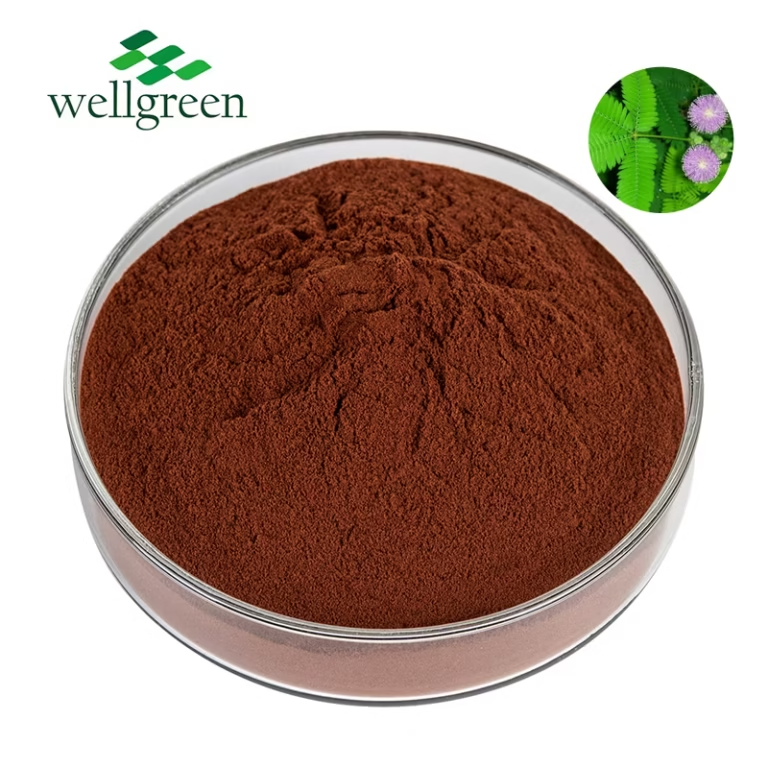Mimosa Hostilis: A Sacred Plant for Indigenous Cultures
Wiki Article

Mimosa hostilis is a venerable plant deeply ingrained in the traditions of various Indigenous cultures across South America. For centuries, it has been utilized by indigenous communities for its diverse spiritual and medicinal uses. The root bark, known as kahie, is particularly revered for its copyright effects, believed to trigger profound visions that facilitate transformation.
Through ceremonies, the plant spirit of Mimosa hostilis is invoked, guiding individuals on a quest of self-discovery and reconciliation with their inner selves. The knowledge surrounding this sacred plant has been passed down through generations, preserving the rich cultural heritage and knowledge of these communities.
MHRB Extract: Unveiling the Secrets of Mimosa Hostilis
Mimosa hostilis, a vibrant plant indigenous to the Amazon Basin, has captured the attention of both traditional healers for centuries. This fascinating species harbors within its roots a potent substance known as MHRB, which has gained significant recognition in recent times.
MHRB extract is celebrated for its benefits, often associated with introspective journeys. Traditional knowledge suggest a long history of MHRB use in ceremonial rituals.
- Researchers continue to explore the active compounds of MHRB, seeking to reveal its full range of effects.
- The intricacies surrounding MHRB usage require caution. It is vital to engage the expertise of knowledgeable individuals before engaging in any practices involving this powerful compound.
Exploring the Ethnobotanical Uses of Mimosa tenuiflora
Mimosa tenuiflorae, commonly acknowledged as "the acacia", holds a significant position within the ethnobotany literature of diverse communities. Its versatile properties have been harnessed for centuries in ancestral medicinal practices, as well as in rituals. The leaves of this remarkable plant possess a rich spectrum of bioactive constituents believed to exhibit therapeutic effects.
From curing ailments like wound infections to promoting spiritual awareness, Mimosa tenuiflora has long been revered for its profound effect on human well-being.
Mimosa Hostilis Root Bark Chemistry and Pharmacology
Mimosa hostilis root bark contains a complex chemical profile, primarily known for its significant concentrations of alkaloids. Among these, N,N-Dimethyltryptamine and THH are particularly important. These molecules possess a range of pharmacological activities, including hallucinogenic effects. The bark contains diverse alkaloids, like harmine, which may contribute to its comprehensive pharmacological profile.
The traditional uses of Mimosa hostilis root bark encompass a spectrum of medicinal purposes, particularly in native communities. However, it is crucial to acknowledge that scientific research on the efficacy of these uses remains scarce.
Tapping into the Power of copyright with Mimosa Hostilis
Mimosa hostilis, a plant native to South America, has captured the interest of researchers and individuals alike for its potent alkaloids, particularly dimethyltryptamine, or copyright. copyright is a powerful copyright substance known for producing intense altered states of consciousness. By ingesting the bark of Mimosa hostilis, one can journey into the realms of copyright-induced experiences. It is important to remember that copyright is a powerful substance and should be treated with reverence.
- Ethical use is paramount, and researching from experienced individuals or knowledgeable sources is highly recommended.
- The pathway of copyright can be both insightful but also potentially overwhelming. It is important to prepare both mentally and physically for the consequences that may arise.
copyright from Mimosa hostilis provides a unique opportunity to delve into the depths of consciousness, may leading to existential growth and understanding.
Moral dilemmas Using Mimosa Hostilis
The utilization of Mimosa hostilis for ritualistic purposes raises a myriad of philosophical questions. While some argue that its cultural significance warrants respect and tolerance, others caution its use due to potential negative consequences. It's crucial to approach this complex issue with sensitivity, taking into account the cultural contexts and potential side effects. A balanced perspective is essential for navigating the ethical nuances surrounding Mimosa hostilis.
Raising Mimosa Hostilis: A Guide for Growers
Embarking on the quest of cultivating Mimosa Hostilis can be a gratifying experience for the dedicated grower. This intriguing plant, native to tropical regions of the Americas, has gained significant recognition in recent years due to its peculiar Mimosa Hostilis root bark properties. Prior to your cultivation mission, it is crucial to grasp the specific requirements this plant demands to thrive.
- Providing adequate sunlight is paramount for healthy Mimosa Hostilis growth. These plants flourish in unfiltered sunlight, ideally receiving a minimum of six hours per day.
- Maintaining well-drained soil is essential to prevent root rot, a common ailment that can ruin your plants. A mixture of clayey soil with composted matter is perfect.
- Regular watering is necessary, but be mindful not to overwater your Mimosa Hostilis. Allow the top inch of soil to dry before providing another irrigation.
The Shamanic Traditions Surrounding Mimosa Hostilis
Deep within the sacred forests of South America, the shrine of vision have been honored for generations. Among these enchanting allies is Mimosa Hostilis, a mysterious plant revered by the shamanistic traditions of indigenouscommunities. It contains within its roots a wealth of power, guiding healers on their journeys into the unseen.
The traditional healers understand that Mimosa Hostilis is not simply a herb; it is a portal between dimensions, connecting us to the universal energies that weave all of creation.
Addressing Legal Problems with Mimosa Hostilis
The legal status of mimosa hostilis can be from one location to another. This means that the acceptability of possessing, using, or cultivating this plant revolves around your exact place of residence.
Furthermore, laws and regulations pertaining to mimosa hostilis are constantly changing. It is therefore crucial that you carefully research the specific legal framework in your region.
- Talking to a legal professional who specializes in cannabis laws is highly recommended.
- Keeping informed about any changes to the law can help you prevent any potential legal problems.
Mimosa Hostilis and Spiritual Exploration: A Journey Inward seeking
The ancient wisdom whispered through the rustling leaves of Mimosa Hostilis calls to voyagers on a inner quest. Journeying upon this path is to awaken hidden dimensions within, where the veil between worlds fades. It's a transformative experience that guides the soul, revealing truths sleeping beneath the surface. As you merge with the essence of this sacred plant, be prepared for revelations that challenge your understanding.
- Embrace the unknown with an open heart and a curious mind.
- Surrender all expectations and allow yourself to be swept away by the rhythm.
- Remember, this is a quest of self-discovery. Trust in your own intuition.
The wisdom gained through Mimosa Hostilis vibrates long after the experience has passed. It is a gift that can transform your life in profound and lasting ways.
Understanding the Challenges and Rewards of Mimosa Hostilis
Mimosa hostilis is a plant native to South America, gaining increasing attention for its potential pharmacological properties. While it contains valuable compounds like copyright, responsible for its psychoactive effects, it's crucial to approach this plant with caution. Understanding both the risks and the benefits of Mimosa hostilis is essential for safe and informed use. Potential side effects can include unpredictable behavior, emphasizing the need for thorough research, responsible consumption, and a safe environment.
- It's important to consult with a healthcare professional before using Mimosa hostilis or any products derived from it.
- Proper dosage is crucial to minimize potential risks.
- Be aware of the legal status surrounding Mimosa hostilis in your area.
- Always prioritize safety and well-being when exploring the use of this plant.
 Report this wiki page
Report this wiki page